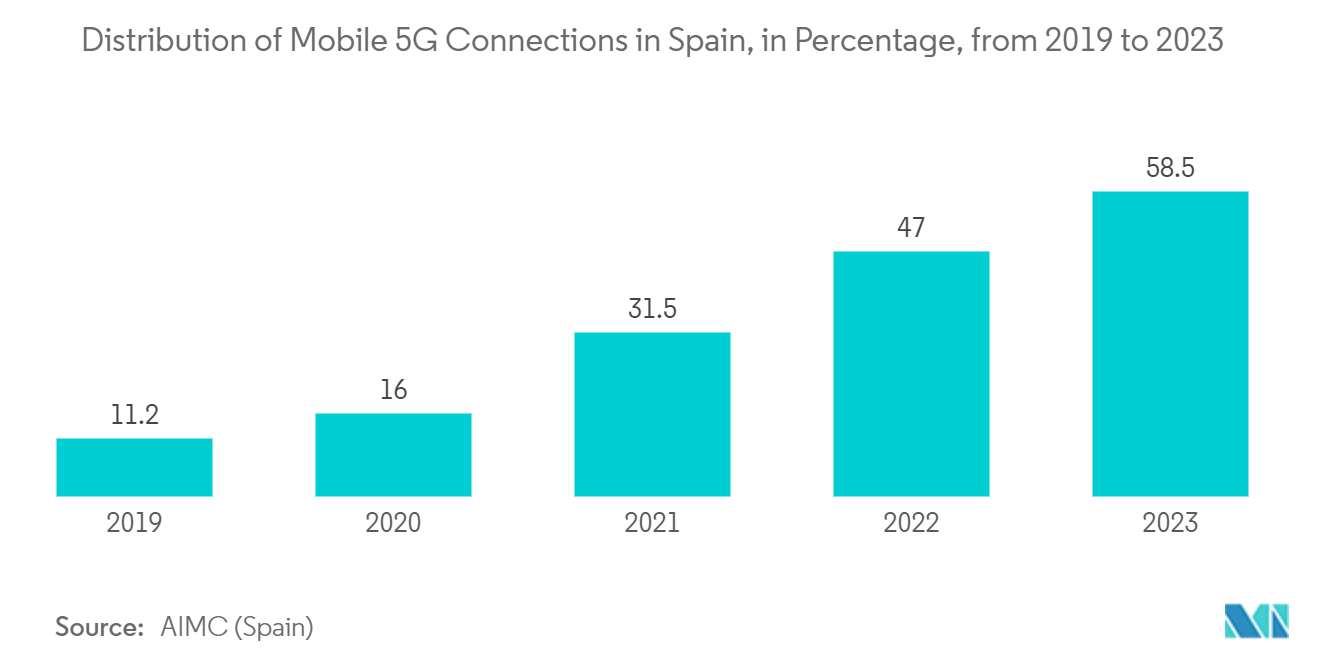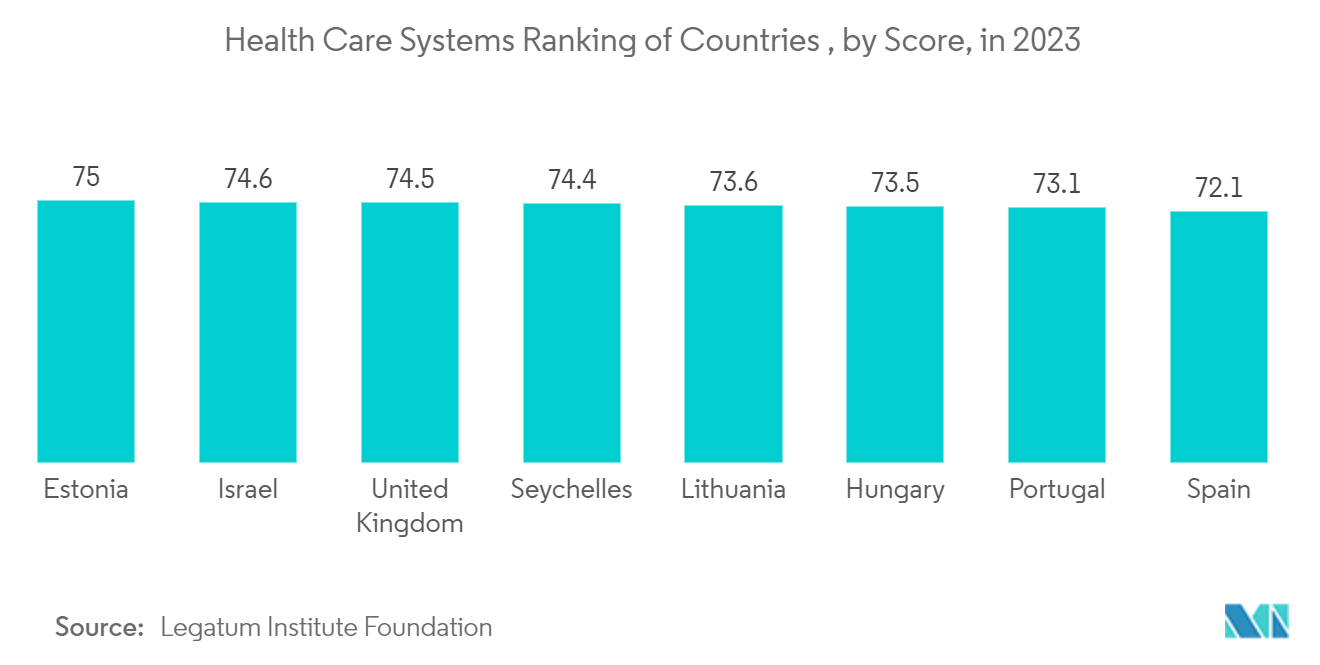Market Trends of Spain Location-Based Services Industry
Indoor Location Segment is Expected to Hold Significant Share of the Market
- Indoor location based service is gradually gaining traction due to the increasing penetration of smartphones, the development of sensor technology, and the increase in indoor time. Sensor technology has enabled smart networks to receive data from a smartphone without installing additional devices, making smartphones the most commonly used data source for indoor positioning. These sensors or hot spots are called bluetooth low energy (BLE) beacons, which locate devices and users inside a building. Other kinds of indoor positioning being used by organizations are Wi-Fi and Geomagnetic. Thus, IT managers, marketing managers, facilities personnel, and other stakeholders are responsible for purchasing, installing, and maintaining these systems.
- Indoor tracking applications benefit indoor location tracking/positioning, proximity marketing, and real-time wayfinding for large facilities, such as airports, hospitals, stadiums, and convention centers. Various startups are operating in this domain to cater to the growing demand. For instance, consider the case of Canada-based InnerSpace. The company provides an indoor mapping and navigation platform for retail, healthcare, and commercial. Their positioning technology uses Wi-Fi and BLE signals and implements advanced trilateration and SLAM fingerprinting approaches to provide better indoor positioning for smartphones and wearables.
- Moreover, Spain-based Situm allows users to create maps by uploading indoor cartography. It provides the highest accuracy (0.5 - 3m) and automatic floor-level detection. There is active research on designing and implementing indoor positioning solutions to support the development of future location-based 5G network functionalities and services. Apps can use geofencing to guide their users to their exact location actively and deliver products and services more effectively through optimization of process delivery (As in the case of ride-hailing services or food delivery platforms). In 2023, nearly half of the respondents declared to have a 5G connection on their mobile phone around 58.5 Percent as of AIMC (Spain)
- However, the built-in smartphone sensors' readings are easily affected by the surrounding environment and are occasionally different, adversely influencing indoor positioning accuracy. For instance, the built-in gyroscope sensor and the magnetometer sensor can be used to measure a user's heading direction, which may be different from each other and occasionally from themselves. As a result, this error accumulates, and the user's position may become increasingly inaccurate. Also, the reliability and availability of indoor positioning technologies, up-to-date indoor maps, and privacy problems associated with location data are some of the biggest challenges to indoor LBS.
- As per the National Markets and Competition Commission, the mobile penetration rate of smartphones in Spain has been constantly growing over the past years. Starting May 2022, the monthly penetration rate exceeded 119 smartphone users per 100 inhabitants in Spain, up from 116 smartphone users per 100 in May 2021.
- The evolution of the LBS has seen increased application from maps and audio to more natural interfaces, from navigation systems and mobile guides to more diverse applications (such as social networking, entertainment, education, and advertisement), from location-aware to context-aware, and from technology-oriented to interdisciplinary research.

Healthcare is Expected to Hold Significant Share of the Market
- Wayfinding, asset tracking, and patient tracking are some of the most popular location-based services, allowing healthcare facilities to better satisfy the requirements of patients and their homes while improving the quality of care and operating efficiency. Health service and information providers can react immediately to the varied location of a mobile user by conveying personalized, timely information and services for the user's new roaming region.
- With the help of indoor mapping and navigation products, patients can be assisted in making their way to and through any healthcare facility. Real-time information can be conveyed to the patients depending on where they are in the hospital, allowing them to make appointments on time and find the correct testing area. Patient tracking is especially important for more vulnerable patients, such as people with Alzheimer's or younger children. In the event of an emergency, patients can be discovered immediately to deliver care faster and more efficiently.
- An online healthcare facility locator service can help users discover the nearest hospital or clinic based on their location and healthiness needs and even supply them with operating directions and real-time traffic information. Location-based technologies, such as LogicJunction, play a key role in mHealth initiatives since they provide rich data, improve patient engagement, create opportunities for greater personalization of the healthcare experience, and seamlessly connect people, places, and things. MediNav Navigator v. 2.0 is one of the most popular indoor navigation solutions available for hospitals, with features like accurate turn-by-turn indoor navigation, parking planner, and network-wide wayfinding.
- The increasing popularity of cloud-based Big Data analytics is one of the upcoming trends gaining traction in the market studied. Big Data analytics provide enriching insights into consumer buying patterns so that retailers can increase their sales volume and enhance customer search experiences. Location-as-a-service companies, such as GeoSpice, use big data analytics for offering cloud-based web services and mobile LBS, which can integrate real-time location information and data analytics.
- As Legatum Institute Foundation In 2023, the health care system in Finland ranked first with a care index score of 72.1, as per their index score.


